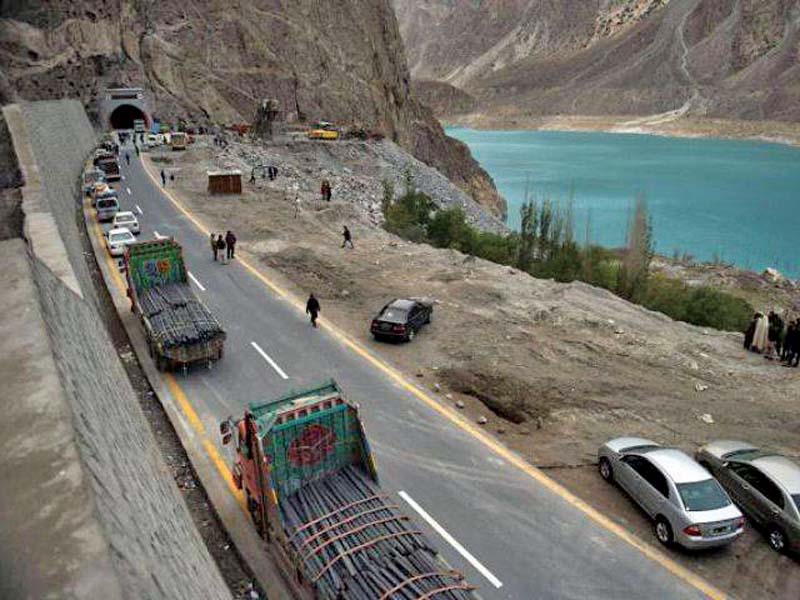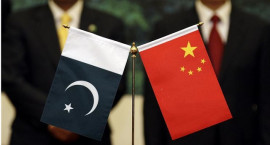
ISLAMABAD: The landscape of infrastructure investing has changed profoundly since China started to aggressively pursue mega projects, and this spending spree doesn’t seem to be getting over anytime soon.
Now, Beijing is all set to bring Afghanistan into its billion-dollar One Belt-One Road (OBOR) despite continuing geopolitical uncertainty and increasing concern over a number of non-traditional challenges including Afghan refugees and insurgency problems.
Though infrastructure development can play a key role in its stability, one has to rethink potential vulnerabilities that arise in the implementation of these mega projects.
Security concerns
The question of how peace and reconciliation can be achieved in the long-term for Afghanistan has yet to be answered, as over a decade has passed since the US-led intervention, which has brought neither security nor political stability.
Afghanistan’s security situation varies greatly from region to region, with northern states having seen little violence, with the most intense conflict occurring in the southern regions such as Kandahar.
Although security is a pre-requisite for developing a road network, yet infrastructure development itself is very important to defeat insurgency. Government troops can move more conveniently and it becomes difficult for insurgents to hide improvised explosive devices (IEDs) on an asphalt road.
Institutional weakness
The last decade has seen a massive overhaul in the organisational setup of Afghan government functions — heavily influenced by the US and NATO. Though these changes, including a new constitution, have been remarkable, its institutions are still relatively weak. In most areas, there is a parallel government.
The central Kabul government has a limited amount of control or even influence outside its immediate vicinity. Multiple ethnic factions and traditional decentralisation of power leaves a country that is not predisposed to one centralised democratic system. With each individual ethnic group having their own system of governance, consideration must be put on the local institutions more than that of the country level. These issues manifest themselves in corruption, widespread inability to enforce the rule of law and general instability
Pak-China calculus on Afghanistan
Sino-Pak’s foreign policy towards Afghanistan has been historically based on principles of restraint and responsibility. For Afghan reconciliation and infrastructure rebuilding process, there is a dire need for a joint three-pronged strategy ie at international, regional and national levels. In contrast, the US has viewed insurgency as a local problem and has failed to develop an integrated coherent national response.
As previous conflicts have highlighted, border regions around the Durand line are infamously difficult to control. Many insurgents used this region to launch guerrilla attacks before retreating back into its relative safety. As such, ISAF and Afghan troops have never been able to defeat them conclusively. Although the US and its allies were able to oust the Taliban from Kabul relatively easily, they became increasingly involved in a prolonged war.
For Pakistan, the fundamental concern about Kabul joining CPEC is the effectiveness of Afghan National Security Forces (ANSF) and a much needed security risk mitigation strategy, which is missing. UN peacekeeping forces may take the responsibility to train ANSF so that concerns of regional stakeholders regarding capacity building may be addressed. Afghan society has tribal structure and diverse ethnicities which the US has ignored. The tribal structure needs to be given importance and the old Afghan “National Covenant” may be revived.
The way forward
The presence of insurgency in the north is fragile so it could be a logical starting point for rolling out corridor projects in Afghanistan. Reaching out a deal for CPEC is out of question, so capacity building of forces is vital for extension of infrastructure projects to the south. It is likely that Chinese won’t be financing the recurrent costs related to security related operational expenditure so the biggest contribution has to come from the war-torn country itself.
Moreover, Kabul can’t depend solely on Chinese government’s flagship foreign policy project and it needs to develop a policy blueprint to attract private sector investments. The Afghan government needs to take measures to develop its industrial base that could easily integrate into the corridor structure once Afghanistan joins the belt-road initiative.
The writer is a Cambridge graduate and is working as a strategy consultant. He tweets at @faranmah
Published in The Express Tribune, February 19th, 2018.
Like Business on Facebook, follow @TribuneBiz on Twitter to stay informed and join in the conversation.


































































COMMENTS
Comments are moderated and generally will be posted if they are on-topic and not abusive.
For more information, please see our Comments FAQ